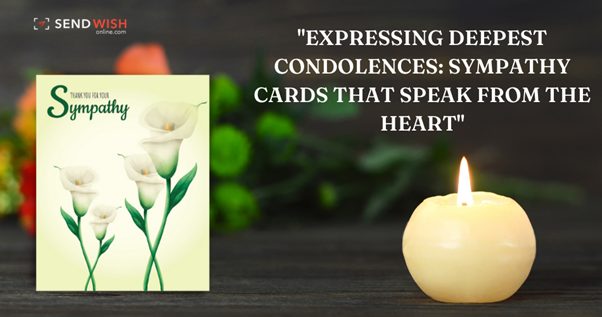Introduction:
Condolence cards have been a source of comfort and solace for centuries, providing a tangible expression of support during times of grief. The evolution of these cards reflects not only changes in printing technology but also shifts in societal attitudes towards grief and expressions of sympathy. In this article, we will explore the simple and profound evolution of condolences card, tracing their journey from handwritten notes to the diverse and thoughtful expressions we see today.
Handwritten Comfort:
In the earlier centuries, condolences were often conveyed through handwritten notes or letters. These messages of sympathy were deeply personal, reflecting the sender’s thoughts and feelings in their own handwriting. The simplicity of these handwritten condolences highlighted the sincerity and care behind the words, forming a direct and heartfelt connection with the grieving.
The Rise of Printed Condolences:
As printing technology advanced, the 19th and early 20th centuries witnessed the rise of printed condolences. Mass-produced sympathy cards became more accessible, allowing people to express their condolences in a more widespread manner. These printed cards often featured serene images, classical poetry, or religious verses, reflecting the artistic and cultural influences of the time.
Standardization for Mass Appeal:
With the mid-20th century came a further evolution in condolence cards. Standardized messages became more common, allowing for easier mass production and distribution. This era saw the emergence of cards with pre-printed messages expressing common sentiments of sympathy. While this streamlined the process, it also brought a sense of uniformity to the messages conveyed.
Incorporating Art and Imagery:
In recent decades, condolence cards have embraced a more artistic and diverse approach. The use of images, illustrations, and photography became a significant part of these cards, adding a visual element to the messages of comfort. This evolution allowed for a more personalized touch, as individuals could select cards that resonated with the personality and interests of the deceased.
Diversity in Themes and Messages:
The evolution of condolence card in modern times has seen a significant diversification in themes and messages. Cards now cater to a wide range of beliefs, lifestyles, and relationships. Whether it’s a card reflecting a religious sentiment, a nature-themed design, or a personalized message that captures a unique bond, the variety allows for more meaningful and inclusive expressions of sympathy.
Technology’s Influence:
In the digital age, technology has played a role in the evolution of condolence expressions. Online platforms and e-cards have become additional mediums for conveying sympathy. While some mourn the traditional aspects of a physical card, the digital space allows for immediate and widespread sharing of condolences, connecting people across distances in times of grief.
Customization for Personal Touch:
Modern condolence cards often emphasize customization, enabling individuals to add a personal touch to their expressions of sympathy. The ability to choose not only the design but also to include personalized messages, memories, or quotes fosters a deeper connection between the sender and the grieving party. This customization allows for a more intimate and thoughtful communication of condolences.
Incorporating Humor and Celebration of Life:
Recent years have seen a shift towards incorporating humor and celebrating the life of the departed in condolence cards. Some cards aim to capture the essence of the person, focusing on joyful memories, shared laughter, and the positive impact the individual had on others. This approach reflects a growing recognition of the healing power of laughter and the importance of honoring a life well-lived.
Sustainability and Eco-Friendly Options:
In response to growing environmental awareness, there is a contemporary emphasis on sustainability in the evolution of condolence cards. Many individuals and companies now offer eco-friendly options, utilizing recycled materials or sustainable printing practices. This shift reflects a broader societal awareness of the environmental impact of our choices, even in the realm of sympathy expressions.
Interactive and Digital Memorials:
With advancements in technology, condolence cards have extended beyond traditional paper formats to include interactive and digital memorials. Online platforms now allow individuals to create digital spaces where friends and family can share memories, photos, and messages of condolence. These virtual memorials provide a dynamic and accessible way for people to express their sympathy and support.
Globalization and Cross-Cultural Sensitivity:
As the world becomes more interconnected, there is an increased awareness of cross-cultural sensitivities in condolence expressions. The evolution of condolence cards acknowledges the diverse beliefs, customs, and traditions associated with mourning. Card designs and messages now aim to be inclusive, respecting different cultural practices and ensuring that expressions of sympathy resonate with a global audience.
Conclusion:
In simple terms, the evolution of condolence cards has transformed a once primarily handwritten tradition into a diverse and thoughtful expression of sympathy. From mass-produced messages to personalized designs, the journey of condolence cards reflects the changing dynamics of society’s approach to grief and the diverse ways people seek to convey comfort and support during challenging times. Whether in the form of a traditional card or a digital message, the core intention remains the same – to offer solace, empathy, and a tangible connection in the face of loss.
